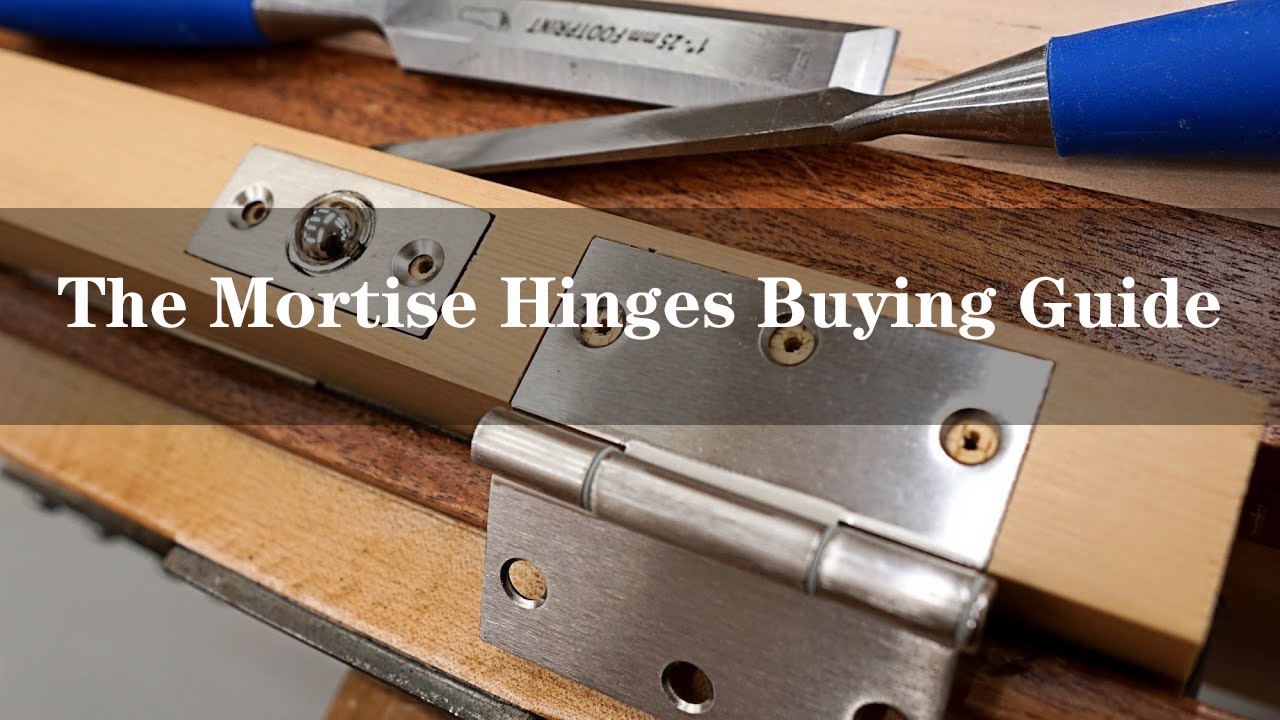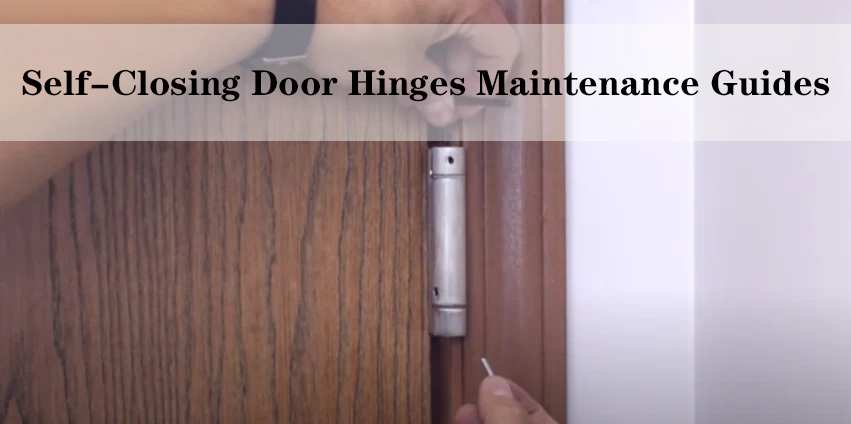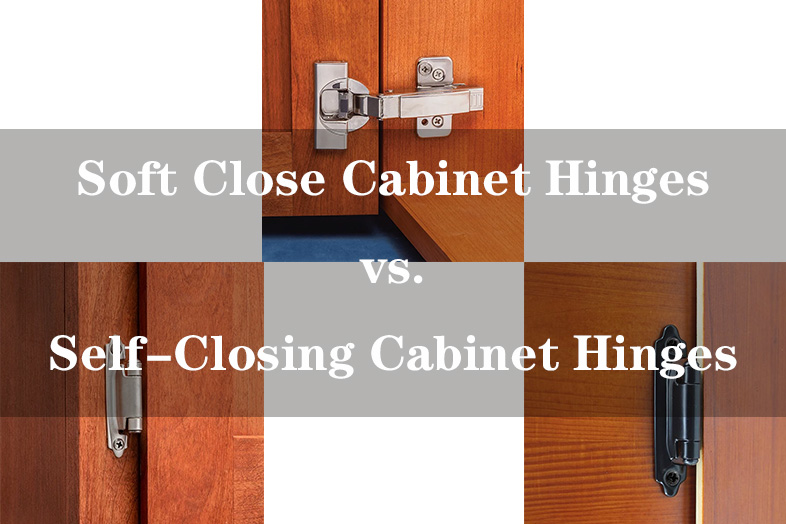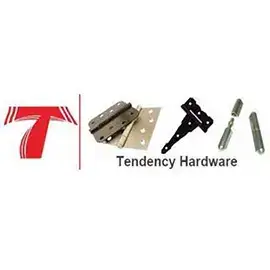When it comes to hinges, there are various types available for different applications. Two commonly used hinge types are mortise hinges and non-mortise hinges. Understanding the difference between these two hinge options is crucial for anyone involved in door or cabinet installations.
Mortise hinges, also known as recessed hinges, are designed to be installed into a mortise or cavity cut into the edge of a door or frame. This type of hinge is often used in traditional woodworking and provides a flush finish when the door is closed. Mortise hinges offer stability and durability, making them an ideal choice for heavy doors.

On the other hand, non-mortise hinges do not require any recess or cavity to be cut into the door or frame. These hinges are surface-mounted and can be easily installed using screws on the surface of the material. Non-mortise hinges are commonly used in cabinet installations and other applications where a flush finish is not necessary.
Understanding the difference between mortise hinges and non-mortise hinges allows you to choose the right type of hinge for your specific needs. Whether you’re working on a door installation project or looking to upgrade your cabinets, selecting the appropriate hinge type ensures proper functionality and aesthetics.
In this section, we will delve deeper into these two hinge options, exploring their features, benefits, and best use cases. By gaining a comprehensive understanding of mortise hinges and non-mortise hinges, you will be equipped with valuable knowledge to make informed decisions when it comes to choosing the right type of hinge for your next project.
Mortise Hinges: A Deeper Look
Mortise hinges are known for their durability, stability, and a seamless, streamlined appearance. What sets them apart is their specific installation process. Mortise hinges are designed to be recessed or “mortised” into the door and the door frame, creating a flush and elegant look. This not only enhances the aesthetic appeal of your doors but also provides a secure fit that helps prevent the door from sagging over time.
Advantages of Mortise Hinges

Flush Appearance: Mortise hinges sit neatly within the door and frame, creating a smooth surface without any visible hardware. This clean look is particularly appreciated in architectural and design-focused projects.
Stability: The recessed installation of mortise hinges provides exceptional stability, as they are embedded securely within the wood. This helps prevent doors from wobbling or sagging, even with frequent use.
Security: The snug fit of mortise hinges adds an extra layer of security to doors, making them more difficult to force open compared to external hinges.
Versatility: Mortise hinges are available in various styles, sizes, and finishes, making them suitable for a wide range of applications, from interior doors to cabinets.
Smooth Movement: Due to their design, mortise hinges provide a smooth and noiseless operation, which is especially important for interior doors.
Disadvantages of Mortise Hinges
While mortise hinges have numerous advantages, it’s important to consider their potential disadvantages as well. Here are some drawbacks associated with mortise hinges:
Complex Installation:Installing mortise hinges can be more complex and time-consuming compared to surface-mounted hinges. Properly mortising the door and frame requires precision and skill, which might not be feasible for all DIY enthusiasts or projects with time constraints.
Irreversible Modification:The recesses created for mortise hinges are permanent modifications to the door and frame. If you decide to change the type of hinge or remove the door in the future, the mortises will still remain, potentially limiting your options.
Professional Skill Required:Achieving a flawless mortise installation demands a certain level of woodworking expertise. Without the right tools and skills, there’s a risk of uneven or misaligned mortises, affecting the overall appearance and functionality of the door.
Limited Flexibility:Once mortise hinges are installed, adjusting their position can be challenging. If the door or frame shifts over time due to settling or other factors, the hinges might become misaligned, leading to potential issues with the door’s operation.
Higher Cost of Installation:Due to the expertise and time required for proper installation, mortise hinges can result in higher installation costs, especially if you hire a professional to do the work.
Compatibility Issues:Mortise hinges might not be suitable for all types of doors or materials. Thin or hollow-core doors, for example, might not have enough thickness to accommodate the recessed hinges.
In conclusion, mortise hinges offer numerous advantages such as sturdiness and a traditional look but also come with certain challenges related to installation requirements and compatibility with specific door types. It’s essential to weigh these factors carefully when considering whether mortise hinges are the right choice for your project.
Non-Mortise Hinges: Versatility and Convenience
Non-mortise hinges, as the name suggests, don’t require the recessed installation that mortise hinges do. Instead, they are mounted on the surface of the door and the frame, offering a different set of advantages and use cases.
Benefits of Non-Mortise Hinges
Easy Installation: Non-mortise hinges are relatively straightforward to install since they don’t involve creating recesses. This makes them a practical choice for DIY enthusiasts and projects with time constraints.
Removability: Non-mortise hinges can be easily removed and replaced without damaging the door or the frame. This is particularly advantageous if you plan to change hinges frequently or need to take off the door for maintenance.
Quick Fixes: If you’re dealing with doors or cabinets that are already installed and need a hinge replacement, non-mortise hinges can be a convenient solution as they can be added without altering the existing structure.
Variety: Non-mortise hinges come in a wide range of sizes, styles, and finishes, catering to different design preferences and applications.
External Mounting: The visible nature of non-mortise hinges can also be considered an advantage in some cases, as they can contribute to a more rustic or industrial look, depending on the chosen style.
Drawbacks of Non-Mortise Hinges
Visible Hardware: One of the primary drawbacks of non-mortise hinges is that they are visible on the surface of the door and frame. This can affect the overall aesthetics of the door, especially if you’re aiming for a clean and seamless look. The exposed hardware can detract from the design, particularly in projects where visual appeal is a top priority.
Limited Stability: Non-mortise hinges, due to their surface mounting, may not provide the same level of stability as mortise hinges. Because they are attached externally, they may allow a small amount of play or movement in the door, leading to potential wobbling or misalignment over time, especially with heavy or frequently used doors.
Less Security: Since non-mortise hinges are installed on the surface, they are potentially more vulnerable to tampering or forced entry compared to mortise hinges. The visible hardware can be more accessible to unauthorized individuals who may attempt to remove the door by removing the hinge pins.
Less Streamlined Appearance: Non-mortise hinges, because they are mounted externally, do not offer the same level of streamlined appearance as mortise hinges. They can disrupt the visual flow of the door and detract from the overall design of the space.
Potential for Misalignment: External hinges are more susceptible to becoming misaligned over time, especially in high-traffic areas or locations where the door is frequently opened and closed. Misalignment can lead to doors not closing properly or even scraping against the frame, causing damage.
In conclusion, non-mortise hinges offer convenient installation and versatility but may not provide the same level of sturdiness as mortise hinges. Homeowners should consider their specific needs and preferences when deciding between these two hinge types for their projects.
Which Type of Hinge is Best for Your Project?
When it comes to choosing the right hinge for your project, understanding the differences between mortise and non-mortise hinges is crucial. Each type has its own unique characteristics and advantages, so it’s important to consider your specific needs before making a decision.
Mortise hinges are known for their durability and strength. They are designed to be recessed into the door and frame, creating a seamless look. This type of hinge is commonly used in higher-end projects where aesthetics and functionality are equally important. With their sturdy construction, mortise hinges can handle heavier doors with ease.
On the other hand, non-mortise hinges are easier to install and adjust. They do not require any intricate woodworking or routing on the door or frame. Non-mortise hinges are ideal for lighter doors or projects where simplicity and convenience take precedence over heavy-duty capabilities.
When selecting the right hinge type for your needs, it’s essential to consider factors such as door weight, frequency of use, desired aesthetic appeal, and ease of installation. Additionally, consulting with a professional or knowledgeable hardware supplier can provide valuable insights and guidance in making an informed decision.
By carefully considering these aspects and understanding the differences between mortise and non-mortise hinges, you can ensure that you choose the best hinge type for your project – one that combines functionality with visual appeal while meeting your specific requirements.
Tips for Proper Installation and Maintenance of Mortise and Non-Mortise
Proper installation and maintenance of mortise and non-mortise door locks are essential for ensuring the security and functionality of your doors. Whether you are a homeowner or a business owner, understanding the correct procedures for installing and maintaining these types of locks is crucial.
When it comes to installation, it is important to follow the manufacturer’s instructions carefully. This includes selecting the right size lock for your door and ensuring that all components are properly aligned. Taking shortcuts or neglecting any steps during installation can compromise the effectiveness of the lock and jeopardize your overall security.
Regular maintenance is also key to keeping your mortise or non-mortise lock in optimal condition. This involves inspecting the lock periodically for any signs of wear or damage, such as loose screws or worn-out parts. Lubricating moving parts with a high-quality lubricant can help prevent friction and ensure smooth operation.
In addition to proper installation and maintenance, taking care of your doors themselves is equally important. Avoid slamming them shut or using excessive force when operating the locks as this can put unnecessary strain on both the lock mechanism and the door frame.
By following these tips for proper installation and maintenance of mortise and non-mortise door locks, you can enhance both the security and longevity of your doors. Remember that investing time in regular care will pay off in terms of peace of mind knowing that your property is well-protected.
























